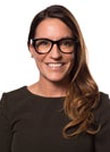Clinical Leader: Uncovering Rare Pediatric Diseases Through Atypical Gene Associations
A conversation with Carol Saunders, PhD, FACMG, FABMGG and Isabelle Thiffault, PhD, FABMGG
Dr. Carol Saunders is the division director of the Clinical Genetics and Genomics Laboratory (CGGL) at Children’s Mercy Kansas City and clinical director of the Genomic Medical Center at Children’s Mercy Research Institute (CMRI), where she is currently focused on clinical testing and research specifically on discovering rare disease gene associations. Dr. Isabelle Thiffault is assistant director of molecular genetics in the CGGL and director of translational genetics at CMRI. She works closely with Saunders on genome sequencing testing. Together, Saunders’ and Thiffault’s team averages at least 10 to 15 publications a year focused on gene associations, with hopes of finding similar gene associations across global publications.
How long have you worked in the field of genomics and what brought you to the genome center at Children’s Mercy?
 Saunders: I came to Children’s Mercy in 2002 right out of fellowship training in clinical molecular genetics, to direct the Molecular Genetics Laboratory. As was typical at the time, we specialized in single gene testing, meaning one or a few genes at a time. In 2011, Children’s Mercy made the decision to invest in genomic medicine and brought in three researchers to launch a big multi-gene panel using next-generation sequencing (NGS.) These researchers had brilliant technical knowledge but needed a clinical laboratory director to guide the design of both the laboratory space and testing process, so they sort of “inherited” me. Together we built the first pediatric genome center — what is now the Genomic Medicine Center at Children’s Mercy Research Institute. That multi-gene panel was offered as a broad symptom-driven test for rare pediatric diseases and was followed by clinical genome and exome sequencing. Since we were such early adopters of this technology, we have a vast amount of data, which has translated into a lot of interesting observations about phenotypic expansion, genotype-phenotype correlations, and new gene-disease associations. This has fueled my research.
Saunders: I came to Children’s Mercy in 2002 right out of fellowship training in clinical molecular genetics, to direct the Molecular Genetics Laboratory. As was typical at the time, we specialized in single gene testing, meaning one or a few genes at a time. In 2011, Children’s Mercy made the decision to invest in genomic medicine and brought in three researchers to launch a big multi-gene panel using next-generation sequencing (NGS.) These researchers had brilliant technical knowledge but needed a clinical laboratory director to guide the design of both the laboratory space and testing process, so they sort of “inherited” me. Together we built the first pediatric genome center — what is now the Genomic Medicine Center at Children’s Mercy Research Institute. That multi-gene panel was offered as a broad symptom-driven test for rare pediatric diseases and was followed by clinical genome and exome sequencing. Since we were such early adopters of this technology, we have a vast amount of data, which has translated into a lot of interesting observations about phenotypic expansion, genotype-phenotype correlations, and new gene-disease associations. This has fueled my research.
 Thiffault: I am from Montreal, Canada. I studied and trained mostly at McGill University. I have a master’s degree in cancer genetics, a Ph.D. in molecular genetics, and a post-doc in translational medicine. After postdoc, I decided to apply to the Molecular Genetics Fellowship Program or CCMG (Canadian College of Medical Genetics) program, which is the equivalent of the ABMGG (American College of Medical Genetics Genomics). Both programs are comparable and recognized — CCMG/ABMGG trainees can take Canadian and/or American board exams without additional training. During my fellowship, I read an academic paper by Saunders and the Children’s Mercy team and it grabbed my attention. I emailed Dr. Carol Saunders, who at the time was leading this research, to see if I could do an “elective CCMG rotation” at Children’s Mercy to learn about “50-hour differential diagnosis by whole-genome sequencing.” She kindly replied that they were too busy, but they needed to hire – and I might be a good fit. I started the position in March 2014; the first months were “credited” as a an elective CCMG rotation and I took the ABMGG board exam in 2015. It was a win-win!
Thiffault: I am from Montreal, Canada. I studied and trained mostly at McGill University. I have a master’s degree in cancer genetics, a Ph.D. in molecular genetics, and a post-doc in translational medicine. After postdoc, I decided to apply to the Molecular Genetics Fellowship Program or CCMG (Canadian College of Medical Genetics) program, which is the equivalent of the ABMGG (American College of Medical Genetics Genomics). Both programs are comparable and recognized — CCMG/ABMGG trainees can take Canadian and/or American board exams without additional training. During my fellowship, I read an academic paper by Saunders and the Children’s Mercy team and it grabbed my attention. I emailed Dr. Carol Saunders, who at the time was leading this research, to see if I could do an “elective CCMG rotation” at Children’s Mercy to learn about “50-hour differential diagnosis by whole-genome sequencing.” She kindly replied that they were too busy, but they needed to hire – and I might be a good fit. I started the position in March 2014; the first months were “credited” as a an elective CCMG rotation and I took the ABMGG board exam in 2015. It was a win-win!
Read the full article via Clinical Leader
